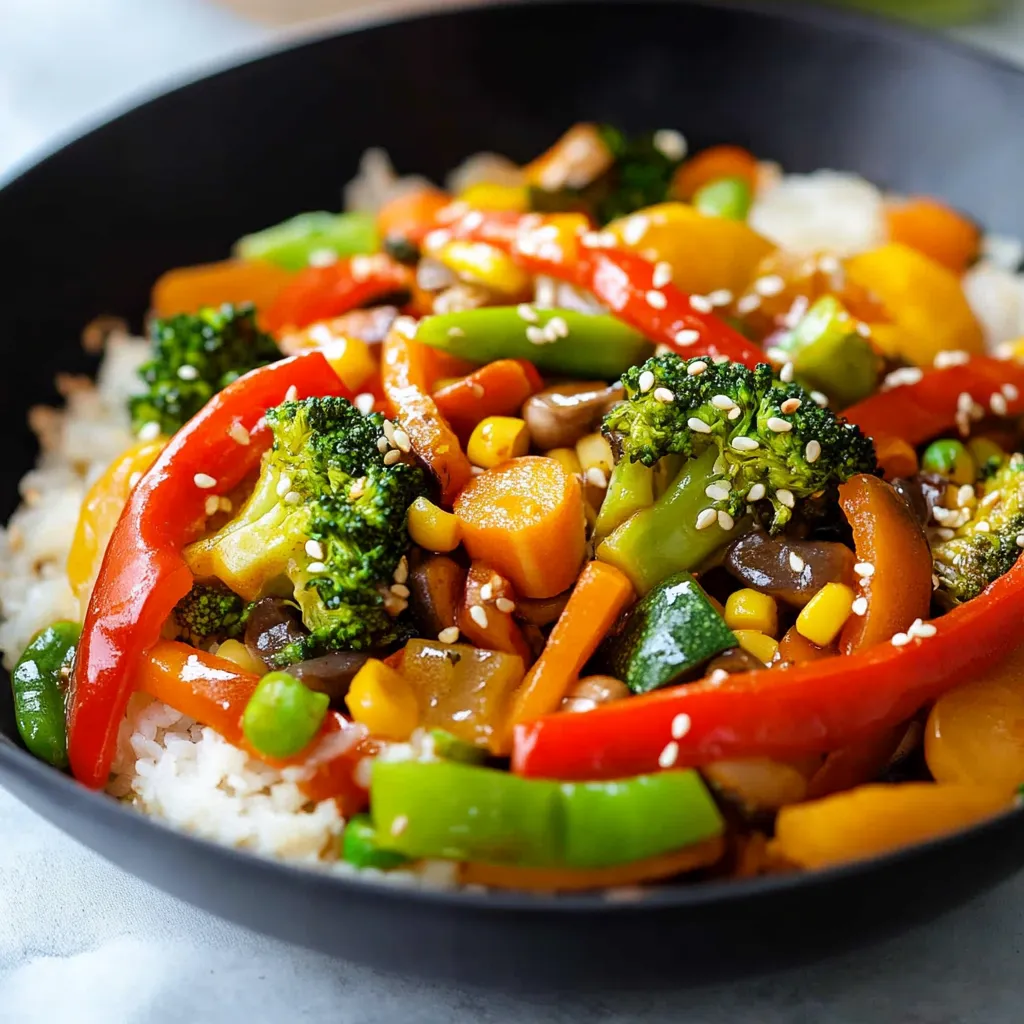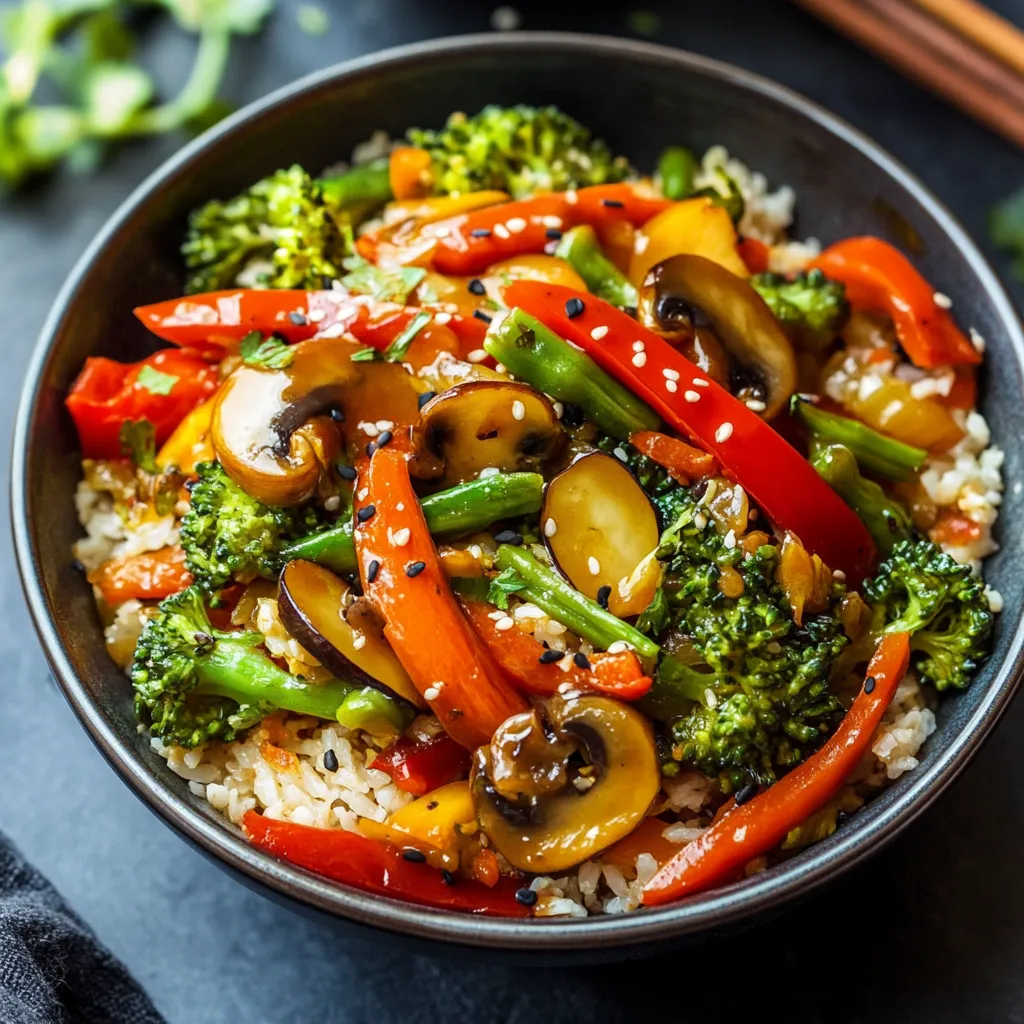 Pin it
Pin it
Turn ordinary veggies into a bright, juicy stir-fry better than what you'd order in. This flexible meal pairs snappy vegetables with a thick, homemade sauce that wraps around every bit just right.
I've tried tons of stir-fry methods over the years and found that getting the timing right and nailing the sauce thickness makes all the difference. This has become what my family asks for when we're short on time.
Key Ingredients Breakdown:
- Vegetables: Pick crisp, fresh options
- Soy Sauce: Go with reduced salt for taste control
- Ginger: Use the real root, not jarred stuff
- Garlic: Fresh cloves, just chopped
- Oil: Something that won't burn like peanut or canola
- Sesame Oil: Only the toasted kind works
- Cornstarch: Can't skip this for thick sauce
Cooking Steps:
- Getting Sauce Ready:
- Mix soy sauce, sesame oil, chopped garlic, grated ginger, brown sugar in a bowl. Stir cornstarch with cold water until smooth, then add to your sauce mix. Put aside.
- Prepping Vegetables:
- Cut everything about the same size so they cook evenly. Group them by how long they take: tough ones (carrots, broccoli), middle ones (mushrooms, peppers), quick ones (snap peas).
- First Cooking Phase:
- Get a big wok or pan really hot. Pour in oil, wait till it shimmers. Toss in tougher veggies like carrots and broccoli first.
- Second Cooking Phase:
- After 2-3 minutes, throw in your middle-cooking veggies. Keep everything moving around. You should hear a sizzle with each piece that touches the pan.
- Last Cooking Phase:
- Add the quick-cooking veggies at the end. Keep stirring until everything's just tender but still has some bite, about 5-6 minutes total.
- Adding The Sauce:
- Pour sauce around the sides of the pan so it runs down. Toss everything fast to coat it all. Cook until the sauce gets thick and shiny.
 Pin it
Pin it
Great stir-fry comes down to good prep work. My grandma always told me to set up veggies like an artist lays out colors before painting.
Managing Your Wok Heat
Getting the heat just right makes veggies cook fast but stay crunchy. Don't throw cold sauce into a super hot pan - it should be just warm when you add it. Cook veggies on high heat, then drop to medium-high when thickening the sauce.
Getting Sauce Just Right
Let your sauce bubble gently while stirring until it sticks to the back of your spoon. It should look shiny and be thick enough to stick to your veggies without getting gloopy.
Keeping Leftovers Fresh
Store what's left in a sealed container for up to 3 days. When you reheat, do it fast in a hot pan to keep things crisp. Don't put it in the freezer or your veggies will turn soggy.
Ways To Serve It
Put it on top of some rice or noodles. Add tofu, shrimp, or chicken to make it a full meal. Sprinkle sesame seeds and chopped green onions on top.
 Pin it
Pin it
I count on this dish whenever I need to use up whatever's in season. The all-purpose sauce and cooking method can turn any mix of veggies into something that tastes way better than delivery.
Frequently Asked Questions
- → Can frozen veggies work?
- Sure, just make sure to thaw and remove extra water to avoid sogginess.
- → Is it safe for gluten-free diets?
- Switch soy sauce for tamari to keep it gluten-free.
- → Can I slice veggies ahead?
- Absolutely. Store them in airtight containers for up to 2 days.
- → What protein pairs with it?
- Try tofu, shrimp, chicken, or beef. Cook it first, then mix it in.
- → Best way to store leftovers?
- Keep in the fridge for up to 3 days. Reheat in a wok to keep them crisp.
